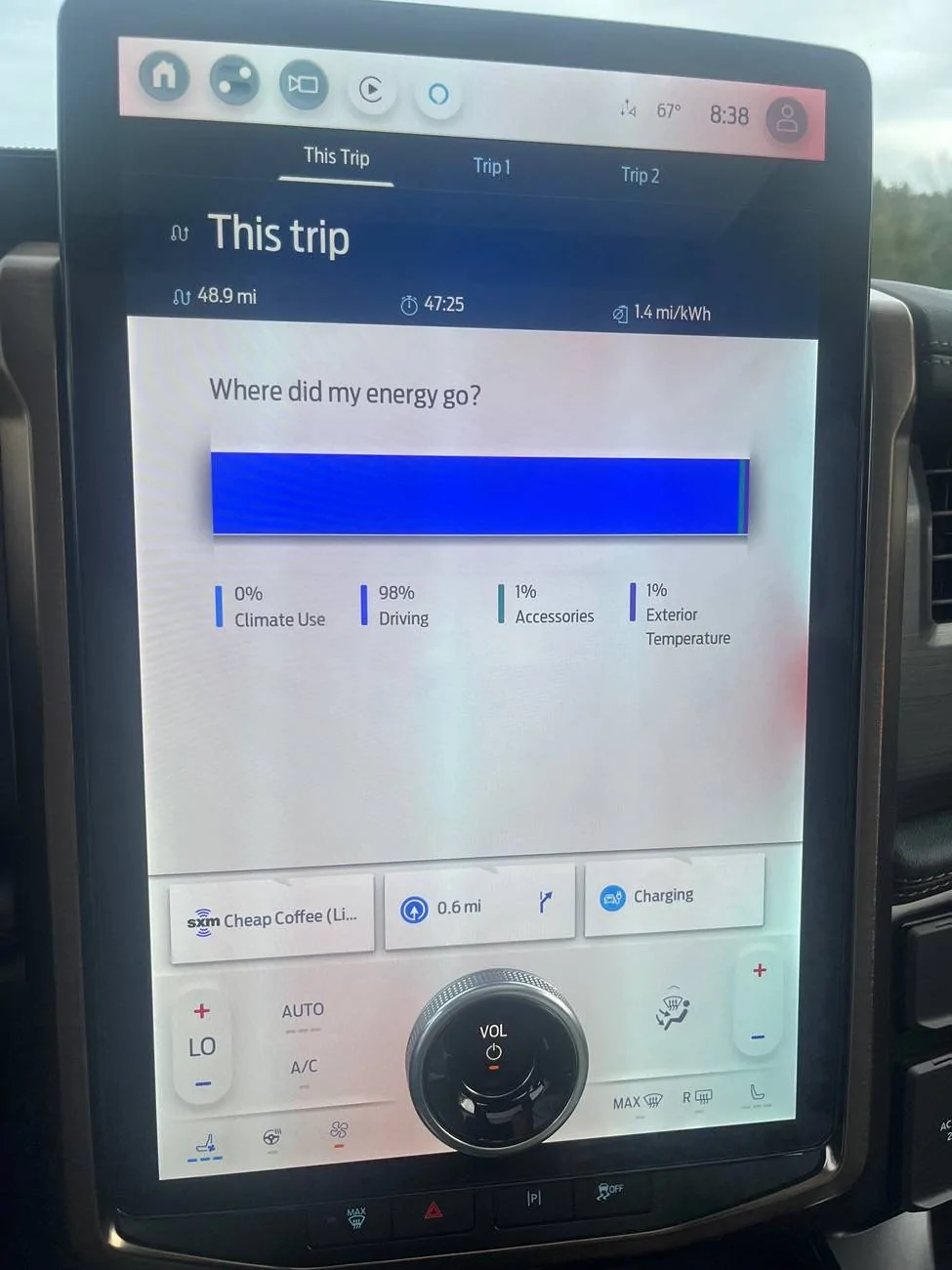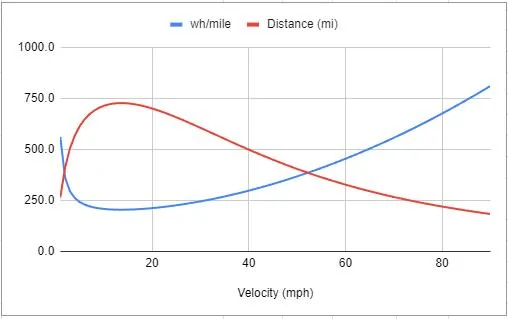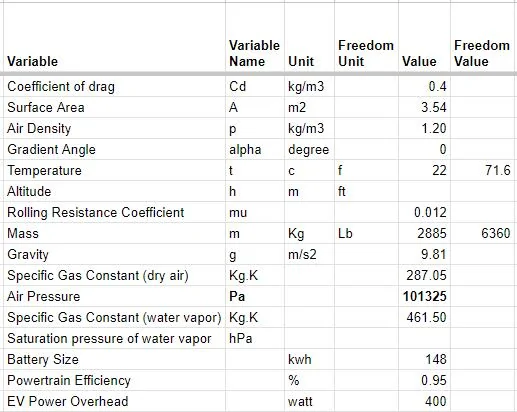chl
Well-known member
- First Name
- CHRIS
- Joined
- Dec 16, 2022
- Threads
- 7
- Messages
- 2,394
- Reaction score
- 1,478
- Location
- alexandria virginia
- Vehicles
- 2023 F-150 LIGHTNING, 2012 Nissan Leaf, 2015 Toyota Prius, 2000 HD 883 Sportster
- Occupation
- Patent Atty / Electrical Engineer
Yes aerodynamics kicks in as the killer with speed - so ICE estimates:You are pushing a huge brick through the air, and you are essentially at sea level. The loss in inefficiency would be the same for an ICE F150. There are many, many threads discussing this issue.
-----
Fuel efficiency typically decreases as a vehicle's speed increases, and the amount of fuel lost per mile per hour varies by vehicle and driving speed:
40–50 mph: The optimal cruising speed for most vehicles
50–60 mph: Fuel economy decreases by an average of 12.4%
60–70 mph: Fuel economy decreases by an average of 14%
70–80 mph: Fuel economy decreases by an average of 15.4%
55 mph: Midsize conventional gasoline cars achieve their best fuel economy at this speed
Over 55 mph: Drivers typically lose 1–2% of their fuel efficiency for each mile per hour they drive over this speed
85 mph: Driving at this speed uses 40% more fuel than at 70 mph
Other factors that can impact fuel efficiency include:
Aggressive acceleration: Can directly lower fuel efficiency
Harsh braking: Can directly lower fuel efficiency
Excessive idling: Can directly lower fuel efficiency
Vehicle age: As a vehicle ages, it can lose efficiency due to wear and tear and fuel injector deposits
-----
FOR EV's:
Electric vehicles (EVs) become less efficient at higher speeds:
Drag: The force a vehicle encounters when moving through air increases with the square of the vehicle's speed. This means that doubling the speed of an EV quadruples the drag force.
Energy consumption: The faster an EV goes, the more energy it consumes. For example, one driver found that their Chevrolet Bolt EV's efficiency dropped from 6 miles/kWh to 4 miles/kWh when they drove faster.
Range: Driving at higher speeds can result in a significant loss of range. For example, one driver reported that their 2017 Chevy Volt only had a range of about 44 miles at 75 miles per hour, compared to its rated range of 53 miles per charge.
Other factors that can affect an EV's efficiency include:
Wind: Headwinds increase resistance, which means the motor has to work harder.
Payload: The more passengers and cargo in the vehicle, the less efficient it will be.
Tire traction: Poor tire traction can result in less efficiency.
Temperature: The temperature can affect how much energy an EV uses. For example, in January 2021, the Tesla Model 3 used 358 watt-hours to cover each mile, but in August 2020, it used 256 watt-hours per mile.
To increase an EV's battery range, it's best to drive more slowly, especially when possible.
-----
The above were presented to me by Generative AI...but they seem pretty accurate.
Sponsored




